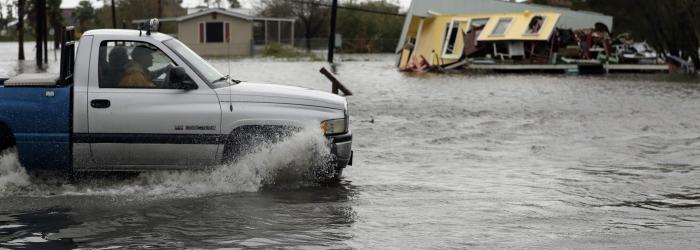
By Amy Bach, as originally posted on Fortune.com
Once again, a storm has devastated a region and broken records. Hurricane Harvey dropped so much rain on Texas, the National Weather Service had to add new colors to its map graphics. Where will the money come from to repair the damage?
We know it will be a combination of government, charitable, and insurance money, but we don’t know what proportion each of these sources will cover. And while insurance (pre-planned and pre-funded by property owners) should be the primary source of recovery funding for Harvey victims, it very likely won’t be.
We’ll be hearing lots of large payout projections by insurers in the coming weeks, but chances are those dollars will flow to the commercial sector, not homeowners. If Sandy is a predictor, households are facing a severely diminished quality of life, grinding frustration, a long slog applying for grants and aid, and way too little insurance funding in relation to the premiums they’ve been paying.
From my perspective as an empathetic person, American taxpayer, and professional insurance consumer advocate, there are many reasons to worry for the victims of this tragedy: The insurance sector has been a leader in recognizing and adapting their operations to climate change. Their primary motivation is to limit their exposure in order to protect their profitability and shareholders. Their leadership is good for our planet, but not for their customers-particularly home insurance consumers. Insurers have dramatically reduced coverage for all forms of water damage, named storms, high winds, and mold in property policies, and replaced fixed-dollar deductibles with higher-percentage deductibles. Flood damage was excluded from home policies starting in the 1960s.
Flood insurance is available, but because you need a separate policy that can be costly and limited, most homeowners don’t carry it unless a lender requires them to. Lenders only require you to buy flood insurance if your property is located in an officially mapped flood-risk zone. Flood mapping in the U.S. has been notoriously under-resourced, and was among the items on the president’s budget chopping block. Only a relatively small percentage of the Harvey-impacted homes and businesses will have adequate flood insurance. For those without it, there is a short list of possible bases for coverage under a home policy.
Unless wind, sewer, or drain backup and/or another covered cause can be identified, Harvey survivors in Texas will have a hard time collecting home insurance funds for repairing and recovering. Estimating flood losses accurately is always challenging, and the enormous scale of the devastation will bring shortages of qualified contractors, drywall, and experienced claim adjusters. Thousands of Katrina and Sandy survivors struggled due to inaccurate and lowball damage estimates. Harvey’s projected 400,000 FEMA aid registrations will dwarf Sandy’s 120,000.
A further complicating factor in Texas is the fact that tort “reformers” got their way in the legislature just this year and set up even more obstacles for limited-income consumers who want to fight back against insurer misconduct, such as lowballing on damage estimates. The ability to hire a lawyer on contingency and recover damages is the most potent leverage a consumer has when seeking a fair outcome with a recalcitrant and powerful insurer. Thanks to tort reformers, Texas residents just lost a chunk of that leverage.
That’s all the bad news. The good news is the hearts and minds of our nation are focused on helping the Lone Star State heal. Forward we go.
